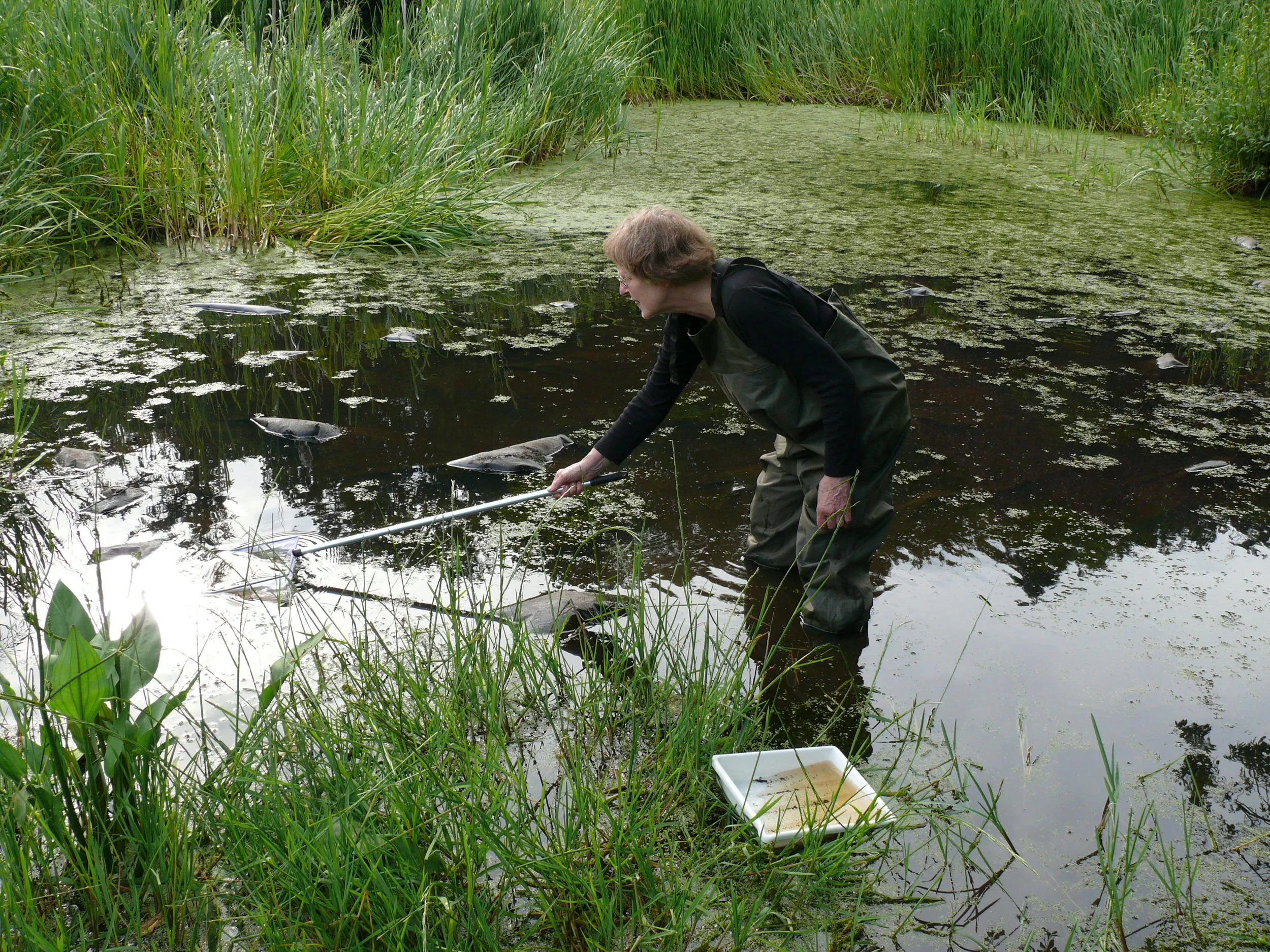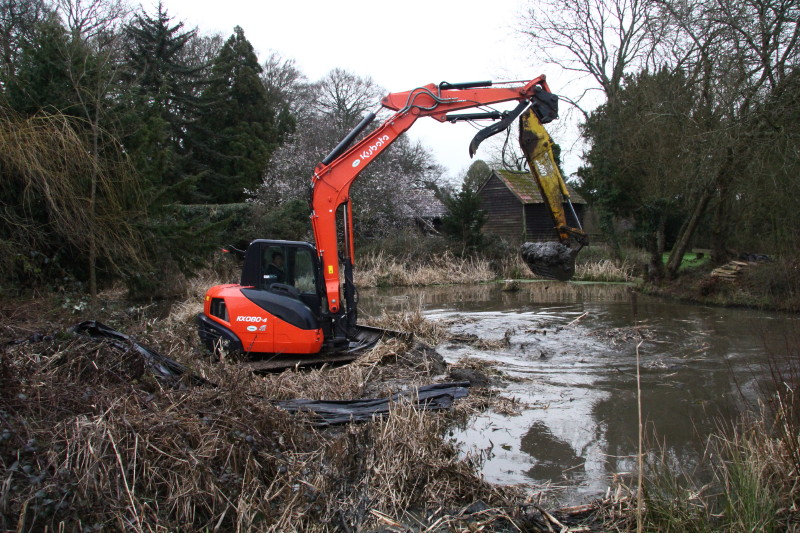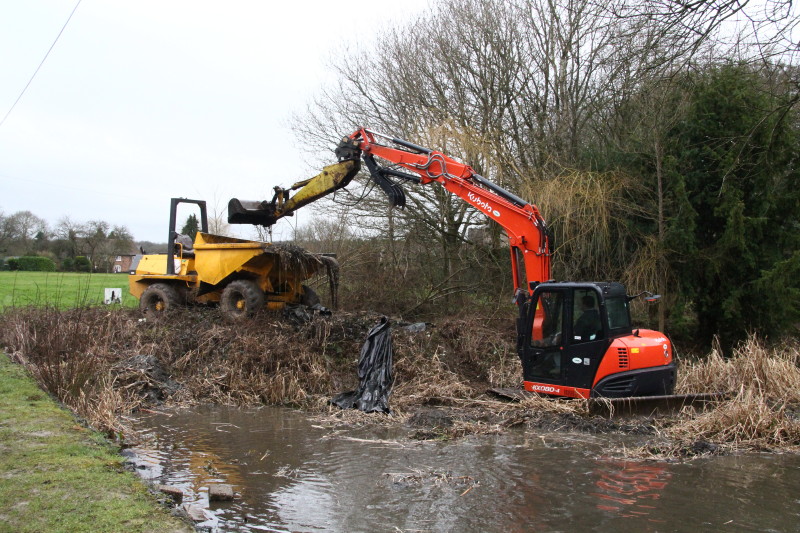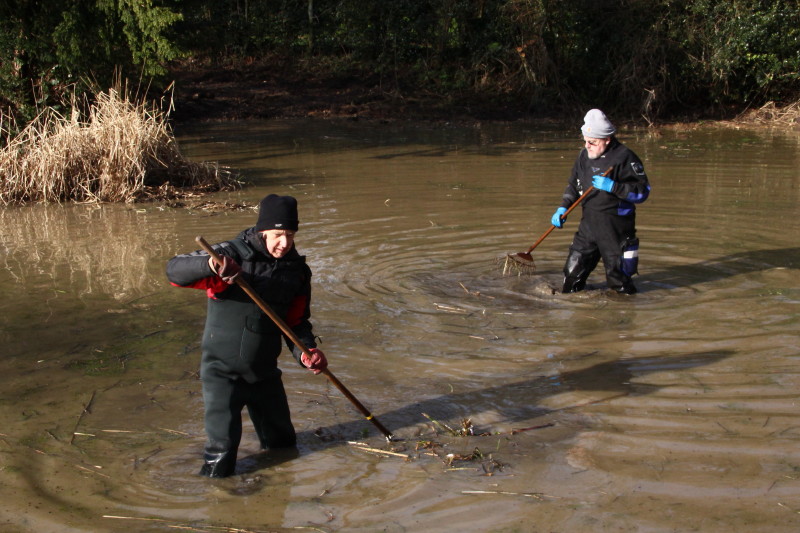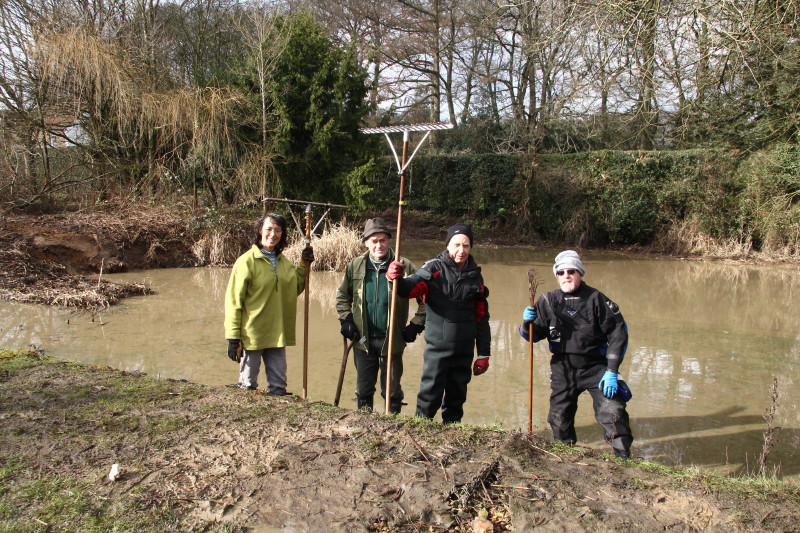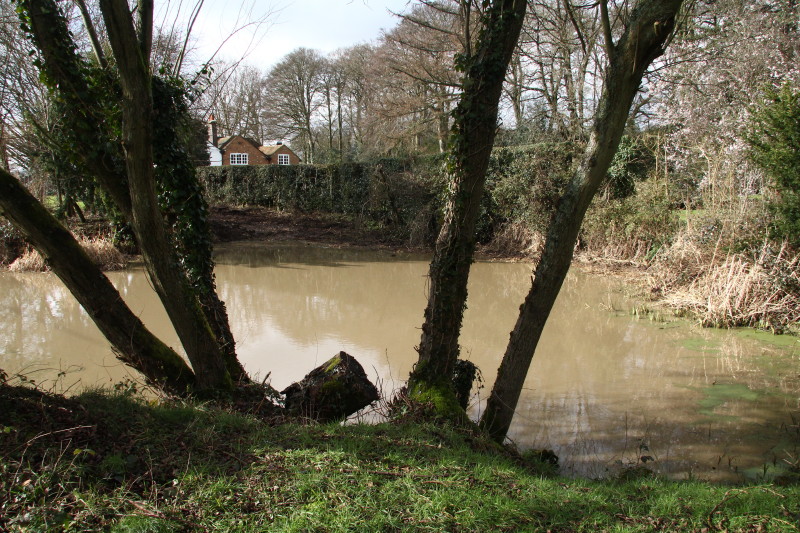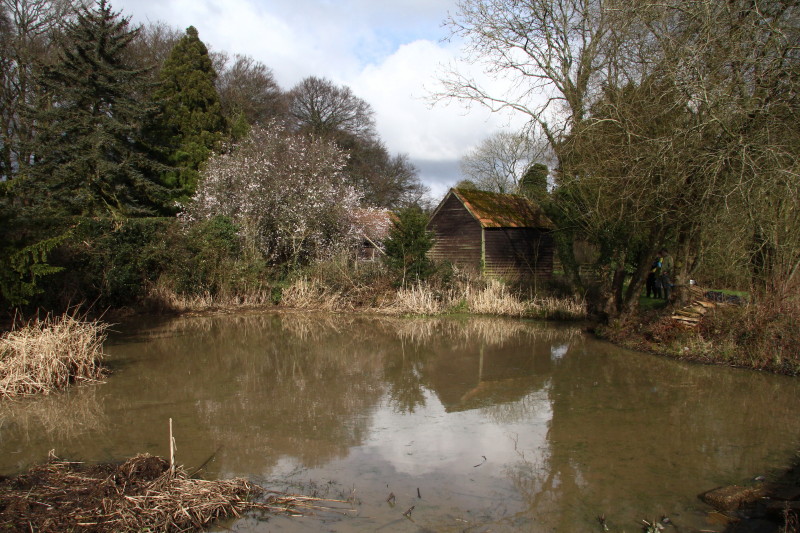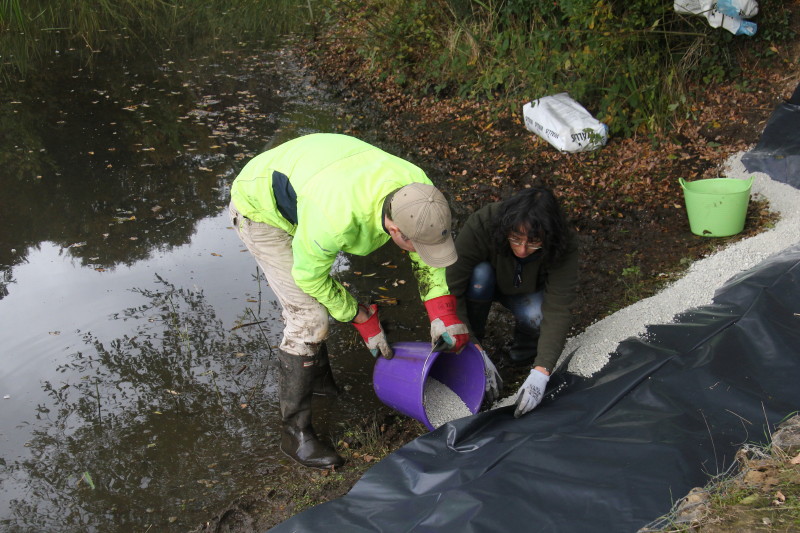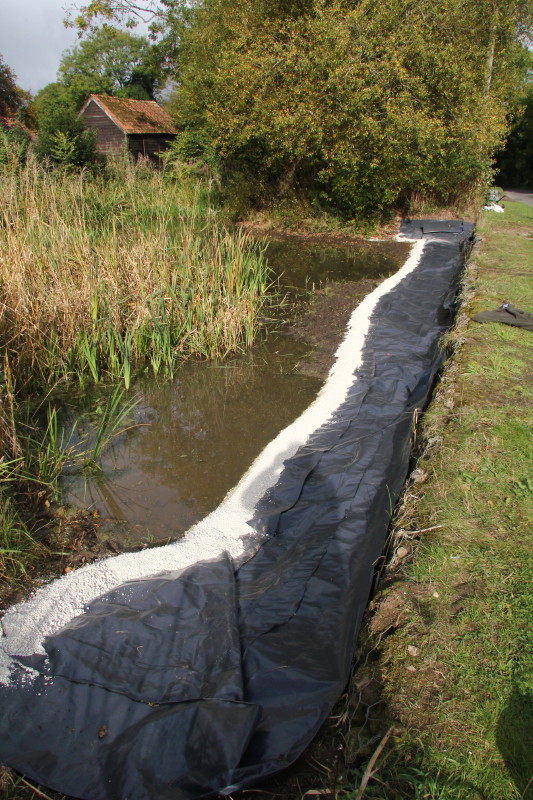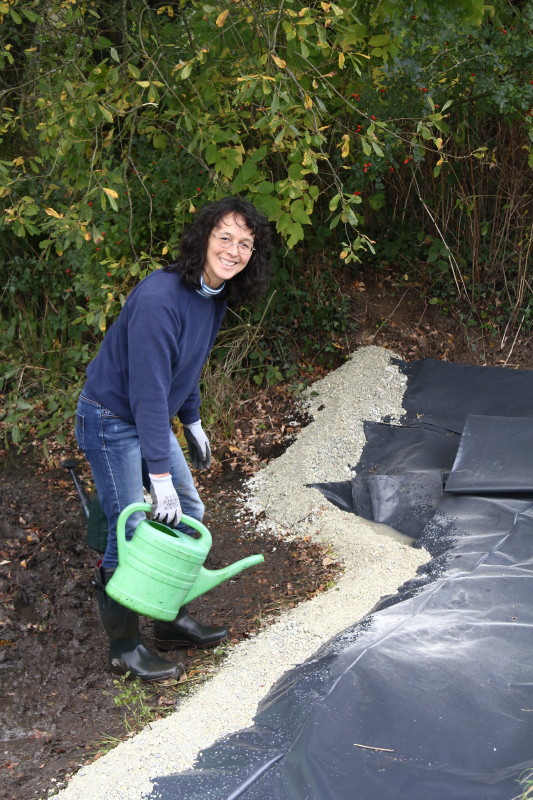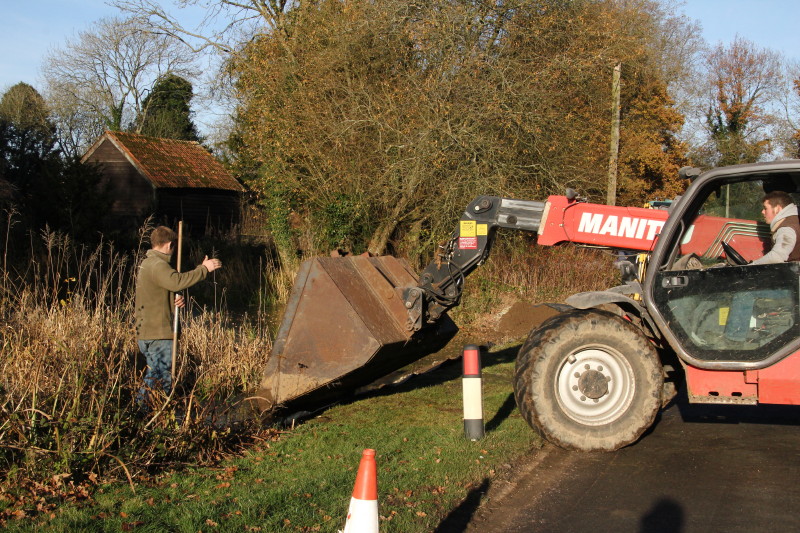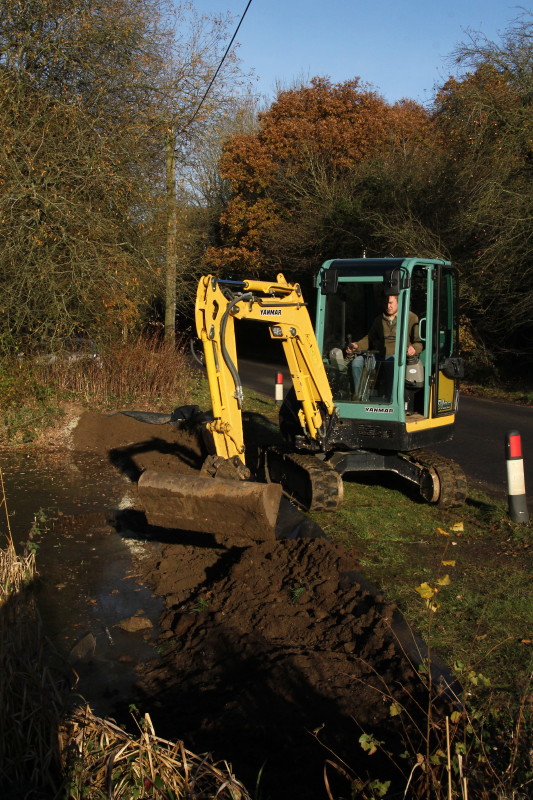Please help us maintain these beautiful Commons for the benefit of local wild life and people alike. Every donation however small will help us with conservation projects like these across the Commons.
Pond Restoration
There are two ponds on the Commons. One is a dew pond next to the cricket pitch and the other is called Pallett's Pond and sits adjacent to the Cholesbury Road to Wiggington. There have been a number of pond surveys carried out over the last decade to assess the best way for HCCPS to manage the ponds for the benefit of local flora and fauna.
Previous pond restoration projects have included the removal of a tree from Pallett's Pond to increase light and reduce leaf litter pollutants, repair of a leak in the road edge of the pond, and Pygmy weed control.. Some dominant plants have also been reduced where necessary to increase plant and habitat diversity. The most recent survey has advised proceeding with limited intervention on the dew pond to open up approximately 25% of the surface area by clearing some of the reed grass. The intention is to rotate the area that is cleared to minimise habitat disturbance.
Pallett’s Pond Update August 2021: The pond is in recovery from the infestation of New Zealand Pygmy Weed, fish which have been dumped there and from the previous leak under the road. With the removal of the weed infestation on a regular basis now and in the hope that we may be able to control it by biological means in the future we do hope to restore it to a much better condition. DEFRA has approved the use of a biological control agent for the Pygmy Weed, a gall-forming eriophyid mite (Aculus sp.) which can be safely released into the environment without causing unintended consequences to other plants. This family of mites is renowned for their host specificity and ability to reduce the plants reproductive success. This mite which controls the weed is currently being trialed successfully elsewhere and we are looking into using this.
Pallett’s Pond has had a leak for over 15 years as a result of the porous ‘gabion wall’ which was constructed by the local Council to shore up the road. In 2015/16, we plugged this leak using a strip of plastic liner and some naturally water-proof clay, which was then covered by earth and landscaped. This has been successful; the summer water level has remained considerably higher, and the appearance of the pond is much improved. However, the greater water depth has encouraged more plant growth, particularly of sweetgrass and the invasive water plant, New Zealand Pigmy Weed, which is spreading throughout the UK. We have tried to remove this in various ways, but now accept that the plant cannot be completely eliminated, but can be controlled. So, from time to time – perhaps every two to three years - we need to remove some areas of growth, as well as the fast-growing sweetgrass, in order to keep the water surface open, and encourage our native wildlife. We hope this action will be sufficient, but will keep the situation under review.
We are indebted to Isobel Clark for her research on ways of managing the pond, and to a number of volunteers for their practical contribution. In addition, James Joliffe, Philip Matthews and Marcus Reynolds have all provided very helpful time and resources, free of charge. We are hugely grateful for their support.
If you are interested in helping with our pond conservation work, then please email:

